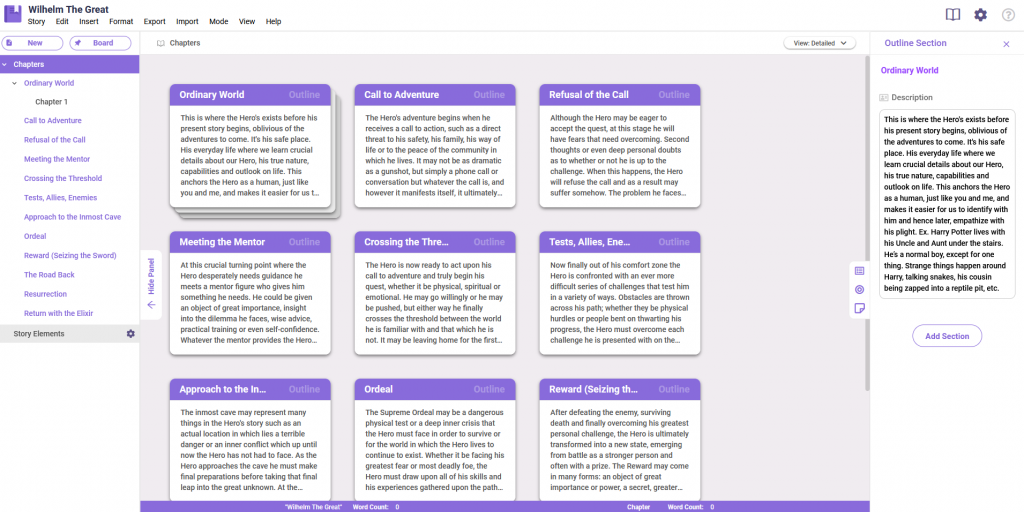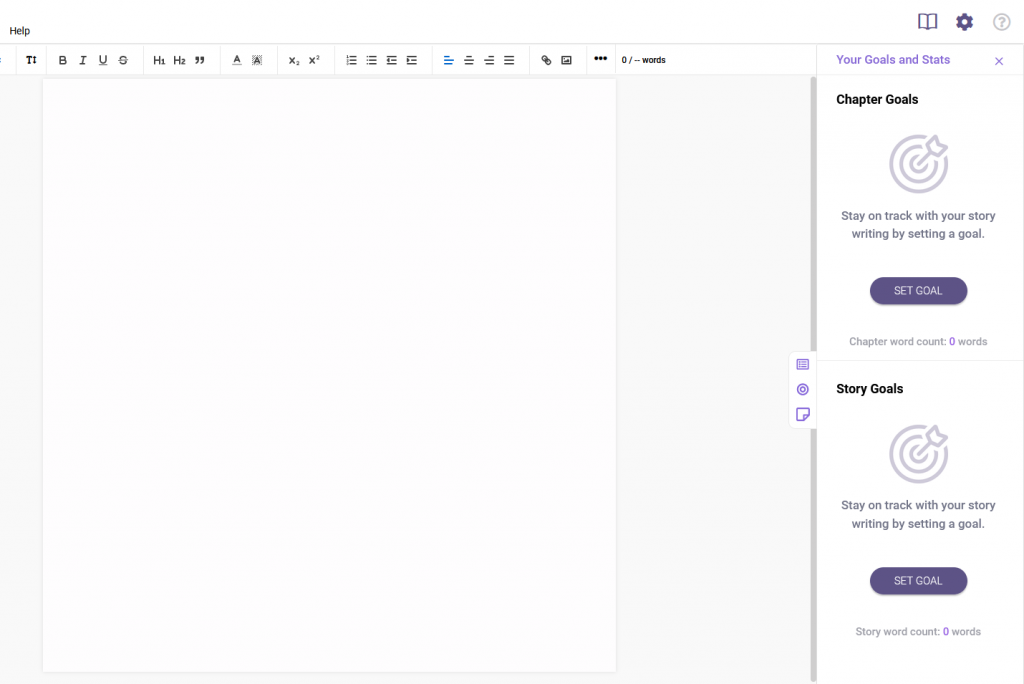How to Write a Book (2021 Guide)

You’ve finally gotten the resolve to write a book. After mulling over it for days and nights, you’ve decided to put your thoughts into paper and become the author that you envision yourself to be.
However, this is easier said than done. Writing a book is a monumental task, perhaps to the point that it can force you to change your lifestyle. It’s no wonder that many people ask how to write a book — how did Jane Austen, J.K Rowling, Stephen King, and many other great names in literature who came before you manage to do such a feat?
How do you write a book? Anyone who has asked this question might get quite different answers, but all will walk through the same, arduous road. Irrelevant of your genre, the challenges and pitfalls manifest all the same to all writers.
In this piece, I will walk you through proven and tested tips for writing a book. Although each writing process is unique to each writer, I hope that you can take our bits of advice and apply it to your own style.
Prologue to the Journey
Your Writing Space

Before you deliberate on how to start writing a book, you need to make sure that you are in your best writing position, literally. Find a space in your home where you feel the most productive. If it has to be that couch in your living room paired with pillows and blankets, then so be it.
Make sure that this space is comfortable and clean. Even if mess and clutter might be more up your alley, seeing that you’re going to be holed up here for quite a long time, a bit of organization might serve you better. Of course, this is purely personal preference, so freely modify your area as you see fit.
Your writing space also includes the tools of your trade. This covers your laptop/personal computer to the physical items that you will need while writing. For your laptop, you will need a word processor, which can range from the reliable Microsoft Word or writing companion software like LivingWriter.
You might also want to stock up on papers, pens, and other stationery that would prove to be useful for your writing process. You don’t want to be in the midst of your writing sprint only to be cut off by the lack of paper.
How to Start Writing a Book
The Big Idea
In learning how to write a book, you have to settle with your big idea. This big idea is crucial, because not only will it define your entire book, but it will also motivate you throughout your writing process. Since you’re going to write about this idea for a long time, it should be something you’re passionate about and something that elicits strong emotions from others.
How do you know you’ve got the big idea? Tell others about it, whether it be your family or friends. Gather their reactions, and if they’re not very enthusiastic about it, your idea might need more refining or rethinking.
Research
Of course, you don’t have to rip out your big idea from the depths of your own imagination. Or your idea might need a bit of a polish and you just can’t find the missing piece for it. A great deal of learning how to write a good book revolves around exhaustive research.
For nonfiction, this step is easily a no-brainer, but fiction writers shouldn’t skimp on research. In writing a book, you are trying to establish trust to your readers, and trust is best founded on facts. If your book makes sense, your readers are more likely to get hooked.
Thankfully, LivingWriter sports the Research Board, a great place to keep all your notes in an orderly manner. Article links, images, and relevant documents stay in one place that you can easily get to in a jiffy. You don’t need to scour your browser history or your messy table if you have it all right at your fingertips.
Research can also entail market gauging. You can check the current trends in your chosen genre, and see what you can offer that can interest your audience. This can help ensure that your book can stand a chance in the competitive market.
For example, if you’re learning how to write a book about yourself, you might need to research best selling biographies and how they are written. Understand the trends in the market and put in your own twist from your big idea. That way, you can ensure that your book can get noticed.
Basic Outlining
Part of learning how to write a book is knowing how to write an outline. Whether you’re an architect-writer or gardener-writer, it’s a necessary skill for writers to outline their ideas. It doesn’t have to be comprehensive or detailed, as long as it tells you the basic structure of your book.
Now, there’s a fact that you might need to understand about outlines. An outline can be, and is usually, organic and dynamic. It doesn’t have to be an irrevocable document, but a guiding paper that evolves as you write. Allow your outline to be changed, modified, or transformed. Not only can it be liberating, it can also make your book better.
Your early outline can be as simple as a single page. This part effectively fleshes out your big idea and breaks it into manageable chunks of work. Your outline doesn’t even have to be well-structured as your English teacher would have asked out of you. This outline should serve you, and so write it as you see fit, whether with Arabic numerals or simple sentences.

LivingWriter’s Outlines and Chapters is a powerful outlining tool. It integrates your outline directly to your chapters, so anytime you have access to your early outlines (that’s drag-and-drop-able!) when you write your first draft. It can even get as deep as having subchapters, if you’re a meticulous outliner.
The Character Cast
Although this is likely more applicable to fiction writers, nonfiction writers can take a piece or two from this section. Basic outlining can entail basic characterization, showing the interactions of your characters.
Although you don’t have to fully flesh out each character at this stage, it can be helpful to have simple notes about each character, even adding significant events that might affect their development or the plot.
Learning how to write a book involves not just careful story plotting, but also meticulous character development. If characters are well-written, readers can empathize with them, increasing their engagement with your book.

Story Elements is one of LivingWriter’s most compelling features. If you’re the type who can spend hours on character sheets, Story Elements is your perfect outlet of writing about your beloved characters. Not only does Story Elements allow you to store notes (and images and nicknames!), it also integrates into your writing, popping at the side if ever you forget some people.
The Writing Routine
It’s a herculean task to finish a book, and so you will need to match it with a massive shift in your lifestyle. It’s easy to make an excuse of not having enough time to write, almost as easy as finding a way to watch that latest Netflix series episode.
Bluntly speaking, you will have to sacrifice something. You have to actively make time for writing, and you have to stay with it for as long as you can. Stick to days and times when you are free, consistently free up those designated times and write. When writing becomes a habit, you’ve almost already guaranteed that you’re going to finish your book.
The Deadline and Writing Goals
How long does it take to write a good book? The answer is, well, it depends on you. However, what’s more important is to establish a deadline honored above all. A deadline can keep you motivated to finish your book. Of course, your deadline should be reasonable and realistic, accounting for possible setbacks and holidays (give yourself a rest, too!).
To help you honor your deadline, you can tell your family and friends about it. Not only can they remind you about it, they can also chastise you for not following through your own deadline. It can be another source of motivation outside of your big idea.
Alongside a final deadline, you can also create writing goals for chapters or word counts. You can determine a tentative word count for each chapter, helping you pace your book, or have a daily writing goal, letting you know when to stop.
You can calculate either of these from your expected manuscript word count, and just like your deadline, they should also be realistic. You might need to do some quick writing exercises or gauge yourself in the first few days of writing to know your writing pace.

LivingWriter’s Chapter and Story Goals were designed to fulfill these needs. LivingWriter automatically calculates them for you, even taking into account your off-days. What’s even more special about it is that if you go over or less than your daily writing goal, LivingWriter automatically adjusts your goals so that you don’t miss out on your sacred deadline.
How to Write a Book (Finally)
A Compelling Opener
A common advice to most new authors in knowing how to write a book is to pay special attention to the first part of your book. If the first chapter, or maybe even the first sentence, doesn’t generate enough interest for the reader to read on, then it might end up back on the bookshelf, never to be opened again.
The stakes are high on your opening sentence, so it makes sense to mull it over and find one that grabs the reader’s attention and simply wants them to flip to the next page.
Here are some opening sentences from famous bestsellers:
- “Renowned curator Jacques Saunière staggered through the vaulted archway of the museum’s Grand Gallery.” — The Da Vinci Code
- “Happy families are all alike; every unhappy family is unhappy in its own way.” — Anna Karenina
- “By the time Eustace Conway was seven years old, he could throw a knife accurately enough to nail a chipmunk to a tree.” — The Last American Man
There are infinitely many ways to write a compelling opener, so experiment with a lot of them. If you have to rewrite the entire opening scene, then don’t be afraid to do so. If it makes the reader want to read the next page, then it will be worth it.
Conflict and Tension

Conflict is at the heart of every book, whether nonfiction or fiction. Conflict that raises the stakes for the characters in your book piques readers’ attention, and even in nonfiction, generating tension makes the reader want to know what happens next.
In learning how to write a book, developing not just major plot points but also minor disagreements and setbacks is crucial. It makes the reader anticipate what happens next, prompting them to flip to the next page.
The Marathon of the Middle
Bestselling author Jerry Jenkins admitted that even he struggles in what he calls the Marathon of the Middle. After all, all your energy must have been exhausted by coming up with a great concept and a page-turner introduction.
In learning how to write a book, you might also need to know what to do if you run out of ideas on how to fill the middle. If you’ve diligently followed this guide, then it’s time to put your outline to good use (if it hasn’t). Your outline holds everything that should be in the middle of your book, which may prove to be your most useful document over the course of your writing.
If you can properly pace each plot point and adjust the progression as necessary, writing the middle should not be as vicious as having no ideas at all. Freely pad the middle with a secondary plot if you have to, but don’t overload with literary gymnastics and flowery language for the sake of filling the word count.
Unnecessary pomp and splendor repel most readers, so make sure that your middle has enough substance and not just glamour. Again, step back to your outline. Make sure that each sentence achieves something for the sake of the plot.
The Bane of Productivity

If you’re not as easily distracted, then you might not need a big part of this guide. But the fact is, you probably check your social media and emails way too often than you should.
Distractions are the bane of productivity, and in learning how to write a book, it would do you significantly well to proactively avoid them.
You can look into apps that can help you stay focused during your writing sessions. In fact, this can be part of your research phase. They usually lock out from your social media, games, and such for a specified time. Some can be free, and some can demand a fee of sorts. Feel free to find which one would be perfect for your case.
End with a Bang
You’re almost on the finish line (for the most part, at least). It’s your last sprint, so make it count. Don’t skimp out on your ending, or else it might make your book regrettably forgettable. If you don’t seriously consider your ending, you might also end up frustrating your readers.
Your readers persevered through a lot of pages and words to get to this point, so make it as memorable as their first words. Don’t rush through your ending. Keep it as well-paced as the rest of the book; it might be your last sprint but it doesn’t have to be a sprint (literally).
As with your beginning, don’t settle for anything less than perfect and satisfying for the end. Rewrite it if you have to, or go back to some parts in the book to add some foreshadowing. The only minimum requirement for the end is for it to be logical and fair, so that readers will understand how the outcome came to be, even if it’s tragic or unpredictable.
How to Write a Good Book in Revisions
You’ve gone through the grueling process of writing a book, and at long last, you’ve had a glimpse of the end. However, your journey doesn’t end here yet, as part of knowing how to write a book is also editing it.
It’s nigh impossible to publish your first draft as is and expect a good response from it. There might be some parts that you were too eager to write about, freely ignoring the rules of grammar and spelling just to get the idea in writing. The revision phase is dedicated just for that.
You might think that you don’t have to do this, since this seems to be an editor’s job. However, the reality is that an agent or editor will not have the time to even skim through your manuscript. They will only take a look at the first pages and determine if they want it or not.
That’s what the revision phase is for. It helps you polish your manuscript so that an editor can have more time reading your manuscript than excessively editing your embarrassing mistakes.
In the revision phase, your perfectionist self is your best self-editor, as you read through each page and spot every literary mistake you can find. You can also fix up some plot holes in this phase, or rewrite some parts for the sake of clarity. Self-editing is a necessary skill for writers, because it can make a book from unreadable to publishable.
In light of editing, proper formatting is also a must in the editing phase. By following proper formatting, your manuscript immediately gets a professional look that can easily increase your chances of getting picked up by an agent.
Feedback

You can look for mentors or fellow writers, who would be willing to take a look at your manuscript and give suggestions for improving it. You can get a few beta readers who can provide you with their thoughts about it, and you can even consider hiring an editor if you feel like your self-editing is not up to par.
Regardless, the key concept here is to have a second (or third, or fourth) opinion about your book. Don’t dismiss feedback; they’re only trying to help.
Publishing Your Book
Publishing your book can go in two ways: traditional publishing and self-publishing. Traditional publishing entails approaching publishing houses who would do all the hard work on getting your book out there. Self-publishing, on the other hand, can be a bit of a DIY-style of publishing, where you have to do all the gritty work from start to finish. Each has their own pros and cons, so you should look into each option and see what works for you.
From Idea to Hardcover
Writing a book can be one heck of a ride. One day, you were still asking around how to write a good book, and then suddenly you see your own words in print. It can be a bit surreal that you’ve persevered through hard times, through the highs and the lows, before you could get to this point.
However, this can only be the beginning of your writing career. If this was your first book, it may as well be not your last. And most definitely, LivingWriter is here to help you in all the steps to writing a book, no matter what it may be about.